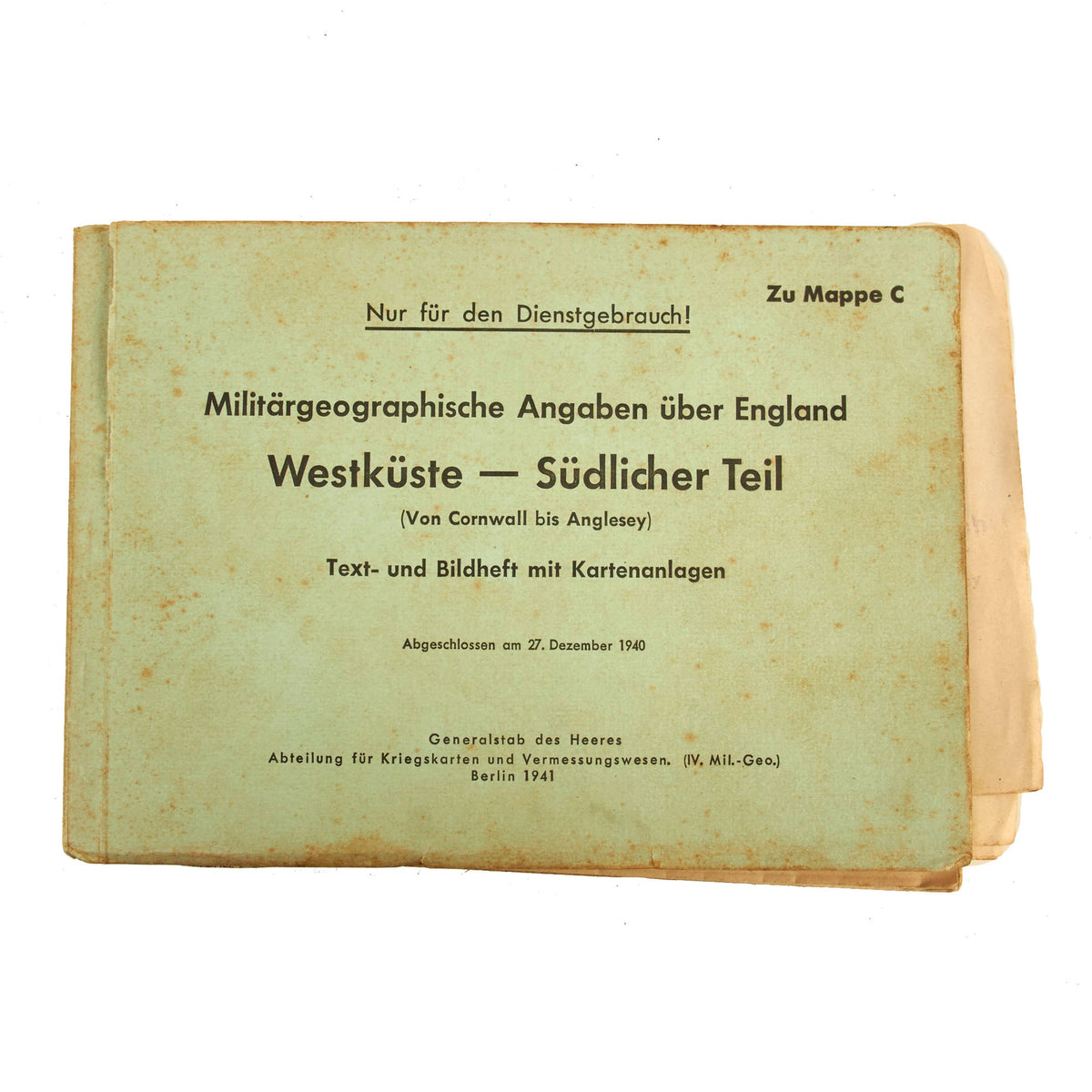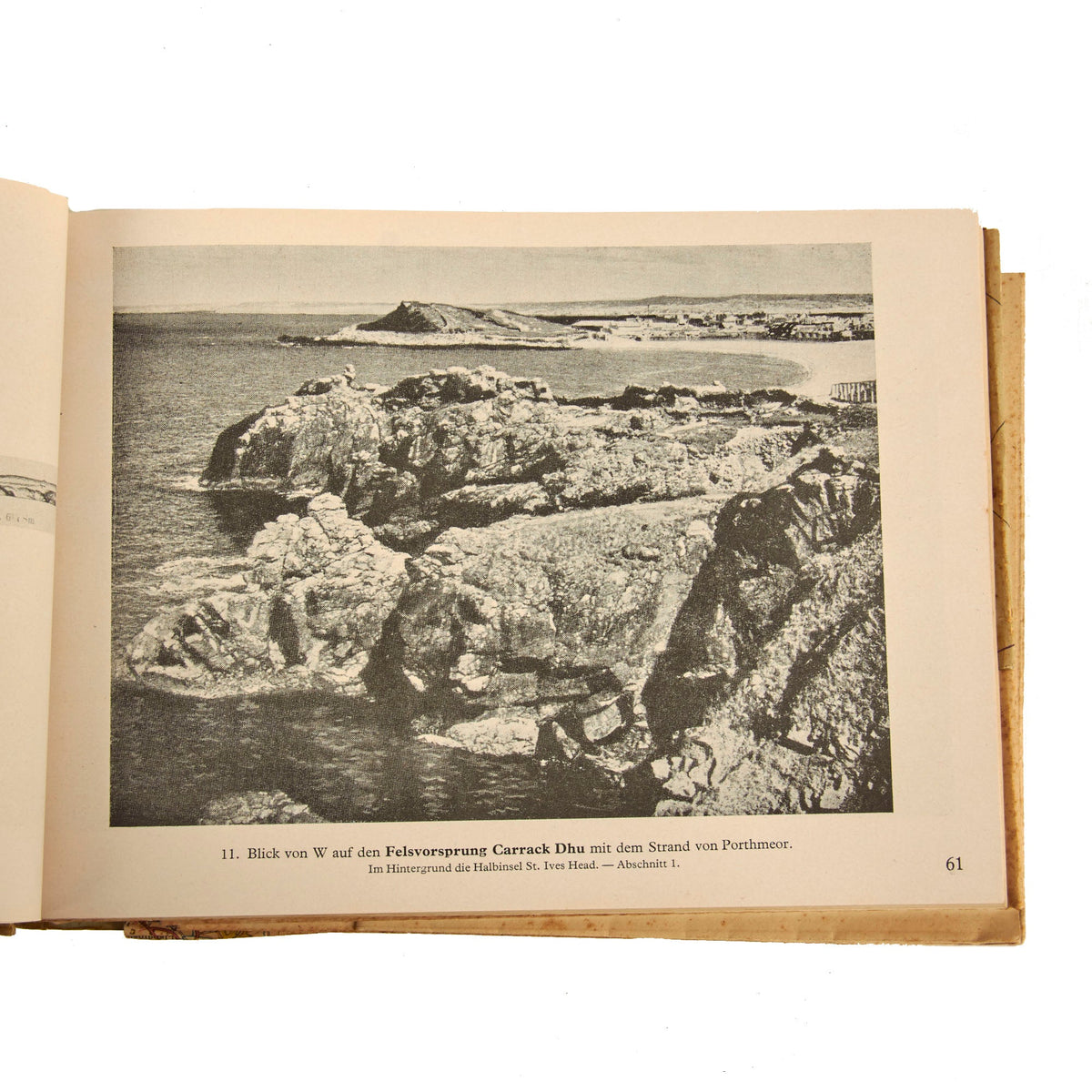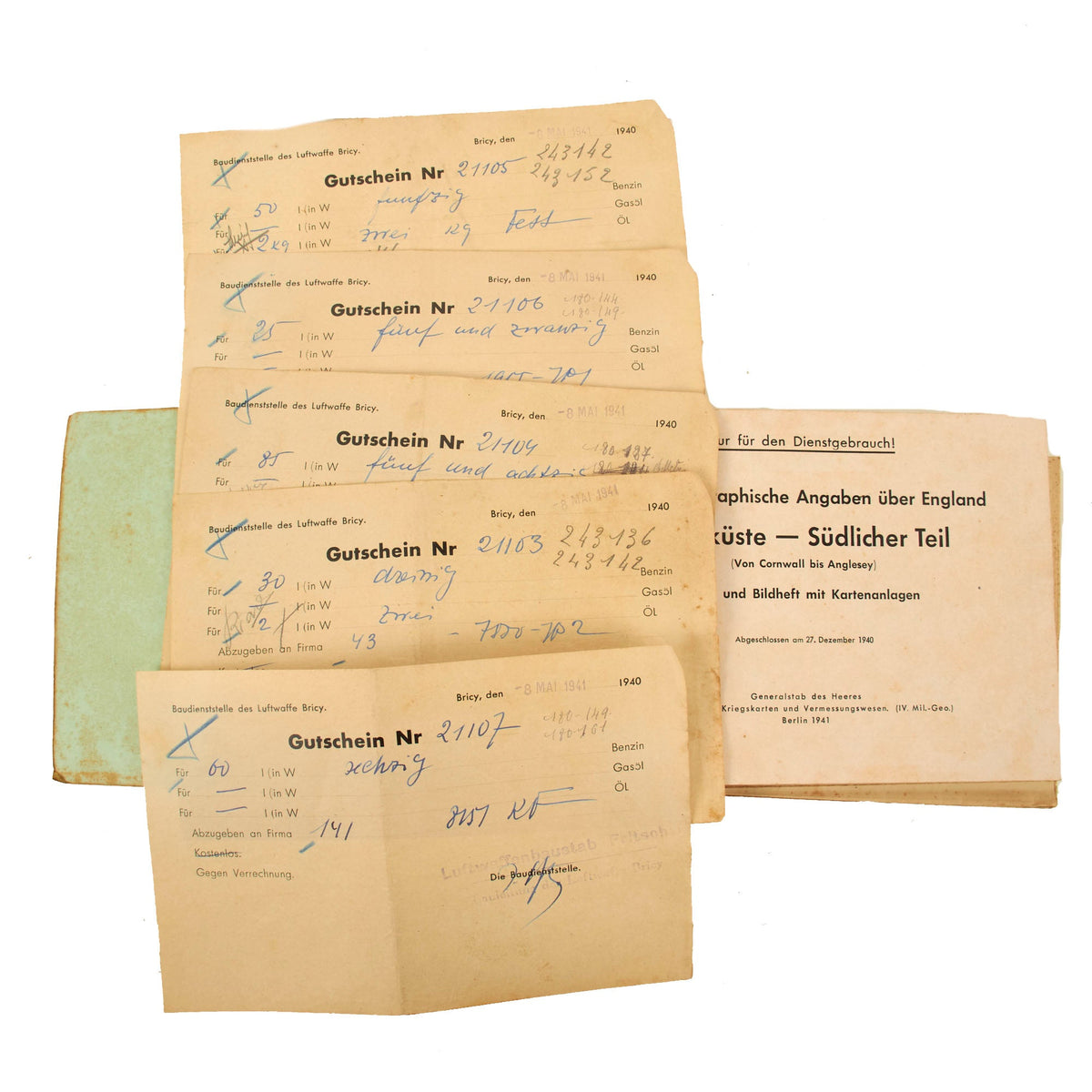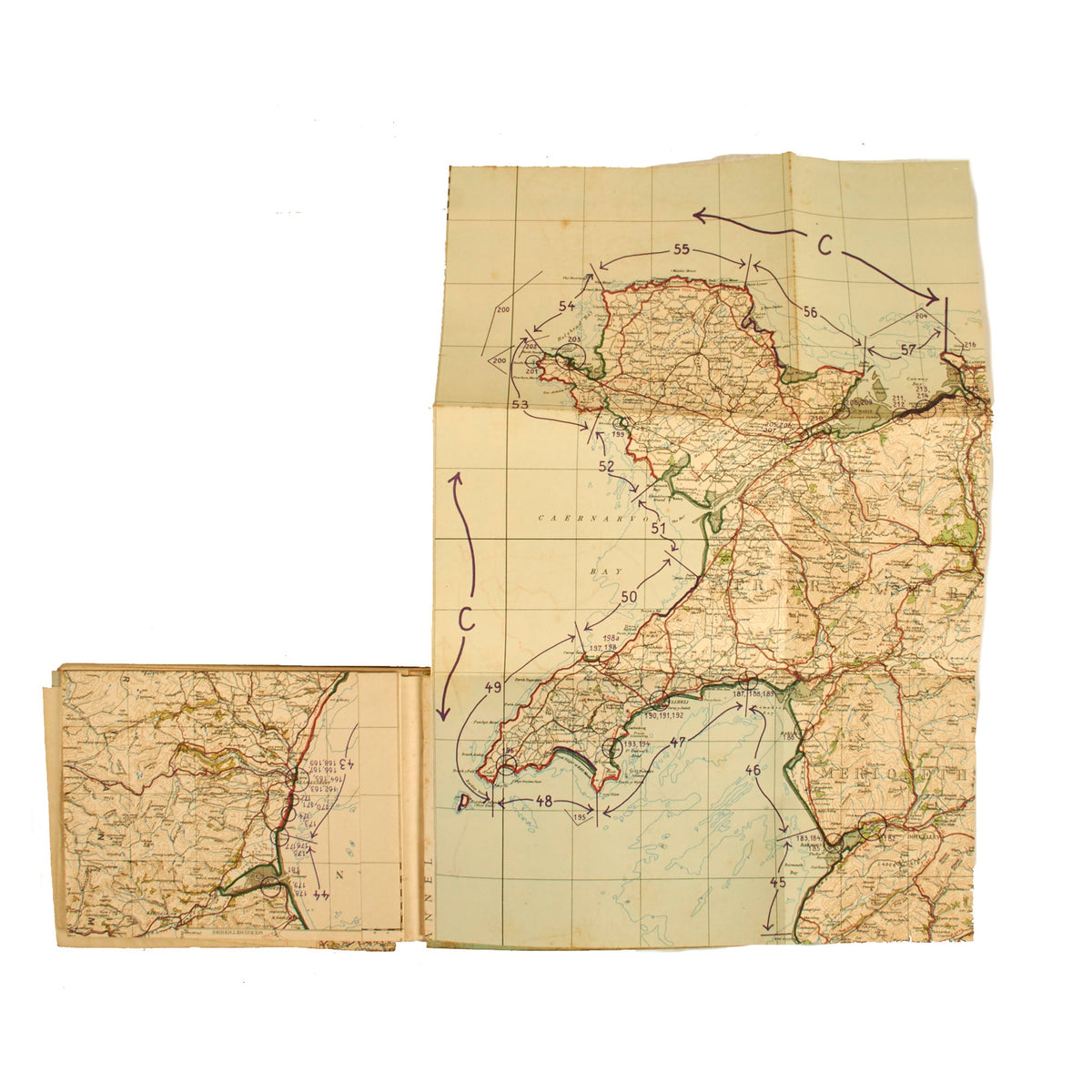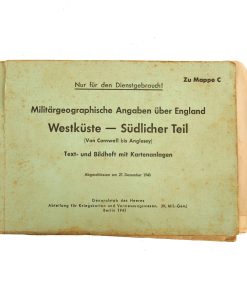Original German WWII 1941 Dated Spy Book – Military Geographical Information on England’s West Coast – Southern Part – Text and Pictures Booklet With Maps Original Items
$ 395,00 $ 118,50
Original Item: Only One Available. Sun Tzu said “Know the enemy and know yourself in a hundred battles you will never be in peril. When you are ignorant of the enemy but know yourself, your chances of winning or losing are equal. If ignorant both of your enemy and of yourself, you are certain in every battle to be in peril”. Knowing the terrain of your enemy would also fall into the category of knowing them. When it comes to invading an unknown enemy country, you run the risk of being enveloped into what is known as attrition warfare. One of the best examples of a war of attrition is World War I on the Italian and the Western Fronts. Both sides were drained until one side did not have enough men, horses, food and other military resources to continue. The term was often used to show a lack of imagination in simply throwing soldiers at their enemy. After invading the homeland of your adversary, you end up fighting an essential war on “their terms”. They have an unlimited supply of men and resources while you, the invading force, will end up having to scavenge or wait for resupplies that may never come. It is important to study the geography of the country you are fighting on so you know the best avenues of approaches, possibly supply routes, major cities, mountain ranges on so on. Once you’ve compiled enough data, you won’t being headed into the fray blind.
In conventional warfare books such as this one published in 1941 by the General Staff of the Army Department of War Maps and Surveying was a necessity. By equipping yourself with the knowledge contained in these types of booklets will help you lead your men into the unknown effectively. The book contains over 272 pages with a wealth of knowledge pertaining to different locations with images of choke points as well as bridge crossings, all stuff needed for strategic emplacement of troops or for bombing targets. At the end of the page there are a few maps corresponding with the locations in the booklet.
The overall condition is quite nice though the cover is partially detached. You can tell this was used often to either study or possibly use practically for missions.
Comes more than ready for further research and display.
Fast Shipping with Professional Packaging
Thanks to our longstanding association with UPS FedEx DHL, and other major international carriers, we are able to provide a range of shipping options. Our warehouse staff is expertly trained and will wrap your products according to our exact and precise specifications. Prior to shipping, your goods will be thoroughly examined and securely secured. We ship to thousands clients each day across multiple countries. This shows how we're dedicated to be the largest retailer on the internet. Warehouses and distribution centres can be located throughout Europe as well as the USA.
Note: Orders with more than one item will be assigned a processing date depending on the item.
Before shipping before shipping, we'll conduct a thorough inspection of the items you have ordered. Today, the majority of orders will be delivered within 48 hours. The delivery time will be between 3-7 days.
Returns
The stock is dynamic and we cannot completely manage it because multiple stakeholders are involved, including our factory and warehouse. So the actual stock may alter at any time. It's possible that you may not receive your order once the order has been made.
Our policy is valid for a period of 30 days. If you don't receive the product within 30 days, we are not able to issue a refund or an exchange.
You can only return an item if it is unused and in the same state as the day you received it. You must have the item in its original packaging.
Related products
Uncategorized
Uncategorized
Uncategorized
Uncategorized
Uncategorized
Armoured Fighting Vehicles of the World: AFVs of World War One (Hardcover Book) New Made Items
Uncategorized
Angolan Rebel 1970s era 60mm Inert Display Mortar from Angolan Civil War Original Items
Uncategorized
Uncategorized
Uncategorized
Uncategorized
Uncategorized
Australian WWII Owen MK1 Machine Carbine SMG Custom Fabricated Replica with Sling Original Items
Uncategorized
Uncategorized
Armored Burgonet Helmet & Polearm from Scottish Castle Leith Hall Circa 1700 Original Items
Uncategorized
Uncategorized
Uncategorized
Uncategorized
Uncategorized
Uncategorized
Uncategorized
Uncategorized
